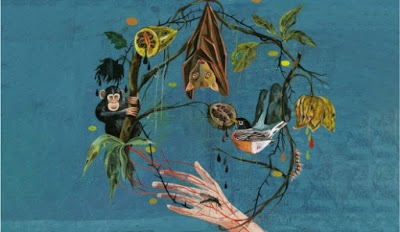Deforestation is leading to more infectious diseases in humans
 |
| Katarina Zimmer 26/03/2020 |
In 1997, clouds of smoke hung over the rainforests of Indonesia as an area roughly the size of Pennsylvania was burned to make way for agriculture, the fires exacerbated by drought. Smothered in haze, the trees couldn’t produce fruit, leaving resident fruit bats with no other option than to fly elsewhere in search of food, carrying with them a deadly disease.
Not long after the bats settled on trees in Malaysian orchards, pigs around them started to fall sick—presumably after eating fallen fruit the bats had nibbled on—as did local pig farmers. By 1999, 265 people had developed a severe brain inflammation, and 105 had died. It was the first known emergence of Nipah virus in people, which has since caused a string of recurrent outbreaks across Southeast Asia.
It’s one of many infectious diseases usually confined to wildlife that have spilled over to people in areas undergoing rapid forest clearing. Over the past two decades, a growing body of scientific evidence suggests that deforestation, by triggering a complex cascade of events, creates the conditions for a range of deadly pathogens—such as Nipah and Lassa viruses, and the parasites that cause malaria and Lyme disease—to spread to people.
As widespread burning continues today in tropical forests in the Amazon, and some parts of Africa and Southeast Asia, experts have expressed concern about the health of people living at the frontiers of deforestation. They’re also afraid that the next serious pandemic could emerge from our world’s forests.
“It’s pretty well established that deforestation can be a strong driver of infectious disease transmission,” says Andy MacDonald, a disease ecologist at the Earth Research Institute of the University of California, Santa Barbara. “It’s a numbers game: The more we degrade and clear forest habitats, the more likely it is that we’re going to find ourselves in these situations where epidemics of infectious diseases occur.”


